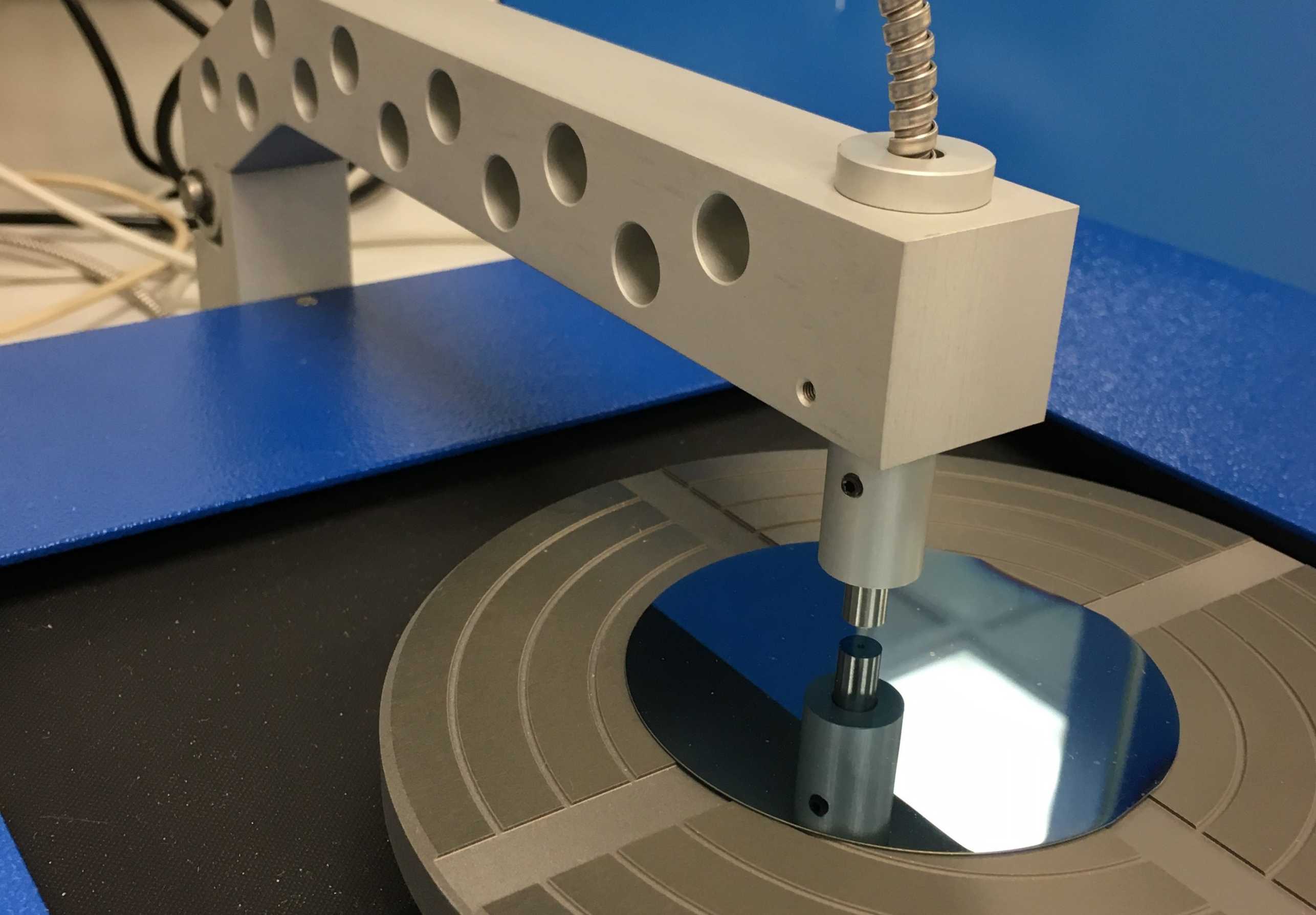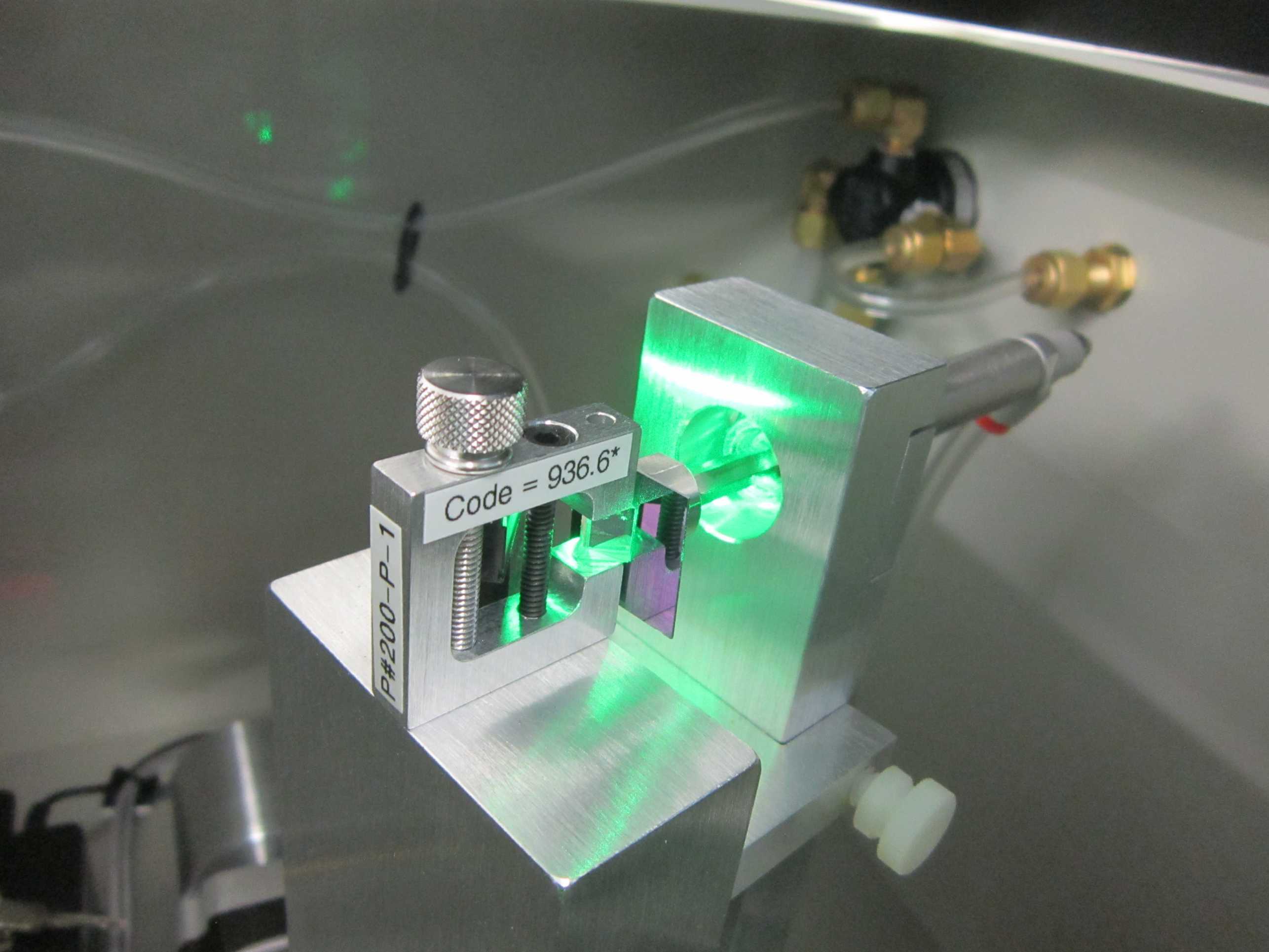Optical Reflectometry
We have an optical reflectometer for contactless measurements and a prism coupler. Please note that both methods require a minimum layer thickness of some hundred nanometers. Very thin layers can be measured by spectroscopic ellipsometry.
Optical reflectometer (Ocean optics)

Responsibility:
- Wavelength range: 270 nm - 1700 nm.
- Mapping option.
- Thickness analysis for samples with up to 10 thin films.
- Sample size: wafers up to 6 inch in diameter.
- Reference samples: Si, Al.
Metricon 2010/M Prism Coupler

Responsibility:
The Metricon is a prism coupler to measure refractive indices and thicknesses. The measurement requires a thickness of 500 nm minimum.
Please note that the surface of your sample needs to be pressed against a prism to couple the light. This can cause damage to the sample surface.
- Rapid measurement ≤ 25 s
- Thickness accuracy ±(0.5 % + 5 nm)
- Refractive index/birefringence accuracy (±0.0005)
- For low refractive indices films (≤ 3.5) and of bulk materials
- Five different wavelengths (405 nm, 520 nm, 635 nm, 980 nm, 1550 nm). No advanced knowledge of optical properties of film/substrate is required.
- Substrate size: 1 cm square up to 8'' square can be measured.
- Substrate has to be polished
- Attention: During the measurement, the sample is in direct contact with the prism over an area of 8 mm diameter.